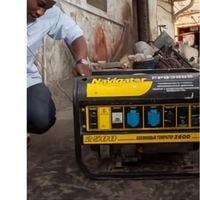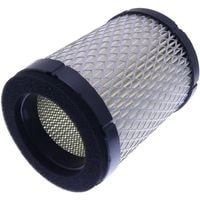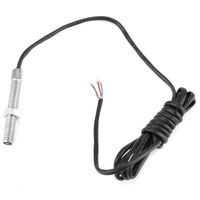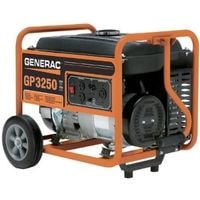My Generator Won’t Stay Running. A generator should start up quickly and run smoothly. The generator should also go off when it runs out of fuel or is turned off.
In some cases, however, the generator will start well but then shut itself down after running for a while. This could happen either immediately after you start the generator or after running it for 20 minutes.
It may also occur as soon as you plug in your home appliances. This is very frustrating, to say the least because your house/outdoor appliances are going to lose power without warning.
My Generator Won’t Stay Running

The first thing we would do is to drain the old fuel from the float bowl and clean it with carburetor cleaner. If we believe that the carburetor could be clogged, we’d first use a product called Seafoam to break up any gunk that might be in the tank before trying a different type of cleaner. The reason for this is that Seafoam might potentially ruin/damage some components of your generator if used incorrectly or for too long.
The following instructions will help you fix the Generator when it doesn’t stay running.
Deficiency In Water Levels
If your generator keeps shutting off, chances are that it doesn’t have enough coolant. Most manufacturers of large generators use water as a coolant and radiator.
If this correct volume is not met, the generator will automatically shut itself off to prevent damage to the delicate electronics.
The temperature gauge calibration acts as a secondary way for the generator to tell you it needs more coolant, but check its fluid level before starting the engine regardless of whether or not there is a warning light indicating a shortage of liquid.
Check their recommended coolant as well, and make sure the settings are dialed in properly.
Keeping the unit aerated also helps it keep cool because air flowing through it carries away heat from the unit via convection.
Faulty Engine
The engine’s failure and inability to continue running is a more serious problem. The issue is quite complicated and must be handled by a professional since it can be difficult to detect.
If you experience this then the best solution is to call in an expert from your generator’s manufacturer because these are the folks who made your generator after all.
If it’s a small and rectifiable issue, it’ll be solved with ease. But if it’s a complex one that costs almost the price of a new generator.
You might as well just replace it with a new one because dealing with a clapped-out old piece of kit will always prove either useless or costly.
Air Filter Clogged Issue

The generator’s air filter is a crucial aspect of the ignition process.
It catches impurities in the air before directing them to the carburetor where they mix with fuel for ignition in the combustion chamber.
Over time, these impurities tend to clog up the spongy element of the air filter.
If you’ve checked the fuel supply and it’s still functioning properly, check the air filter next.
Open up your generator’s air filter housing and check to see if there are any clogged bits on your spongy element within your air filter.
Clean this out with a soft brush or scrubbing device since if you used water or any other liquid it might affect the element within your plastic housing. Make sure this part isn’t torn as well. If so, buy a new one.
Fuel Cap Problem
As fuel is being sucked up by the engine, it’s being replaced by air coming in through a small vent on the fuel tank.
For this system to work properly, this vent must be unobstructed. If not, a vacuum or “vapor lock” will occur, which stalls the flow of fuel to the carburetor.
Once you’re able to look down at your car or vehicle’s fuel tank from underneath and see that it has been tied off with a rubber hose instead of one of those foil straps, then you know that your issue is most likely no longer present.
That you should be able to remove that vacuum hose completely without having any more issues with oxidized gas fumes flooding back into your vehicle as well as preventing your vehicle’s engine from starting due to “vapor lock” which has now been greatly reduced.
Defective Carburetor
The carburetor on your car might be clogged up, or the fuel you’re using may have been bad.
If the old gas was left in the small engine for a long period of time, some of the more volatile ingredients may have evaporated and left behind a thicker, stickier substance that could clog up the small jets and ports of the carburetor.
This clogging prevents the engine from running correctly. In order to fix this problem, you should simply drain out all of the leftover fuel from your car’s float bowls.
You can clean off any varnish or residue by treating your carburetors with a carburetor cleaning product. If this doesn’t work well enough, you will have to replace them entirely to put an end to that sticky problem.
Exhaust system Malfunction
It’s important to ensure you can always see the smoke that your generator is releasing as it means that it isn’t running properly.
If there is too much smoke, then that could mean your engine isn’t working properly, and if it’s not being taken care of, the engine will stop working altogether.
Generators do best when you clear out the exhaust on a regular basis to avoid having any blockage issues to worry about throughout the course of your day.
If you notice your exhaust isn’t what it usually looks like, make sure you check that out as soon as possible.
Industry experts always say good things about generators such as this because of their ability to save any individual who may be stuck someplace away from home without access to power.
Failed Sensor

The problem is latent in every new release of generators.
The occasional faulty sensor can stop generators from turning on even though they’re not yet done working.
Once you’ve calculated the faulty sensor and removed it from the circuit board, your generator should work correctly once more.
One way to find out where said faulty sensor is located is to stand at a distance while someone else operates it without you nearby so as to observe where it stops functioning; when this happens, you know instantly that that’s where the issue lies.
My Generator Won’t Stay Running
Related Guides
